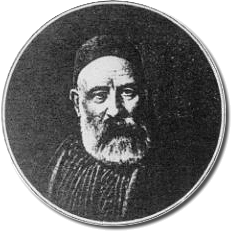 |
|
|
He moved to Luxor in 1838 and was involved in the excavation of the ruins of Thebes, an ancient Egyptian city, until 1843. He spoke fluent Arabic, wore Muslim attire, named himself Idrīs Efendī, and immersed himself in the local community. His training in architecture contributed to his accurate sketches of reliefs and hieroglyphs of the ruins. With the encouragement of George Lloyd (1815–1843), a Welsh who worked as his assistant since 1841, he began to draw sketches of the local peoples, which later became the basis of the Oriental Album. The many vibrant portraits displayed in the exhibition were doubtlessly created by Prisse d’Avennes, who openly entered into the lives of the peoples residing in the Nile valley. After losing his friend Lloyd in an accident in 1843, Prisse d’Avennes returned to France in 1844 carrying the “Chamber of Ancestors” from Karnak and the “Prisse Papyrus,” long considered the world’s oldest document. He donated these collections to the Louvre. Leaving the Oriental Album that he dedicated to his friend Lloyd and got published in 1848, and great works on ancient Egyptian and Arabo-Islamic arts, he died in Paris in 1879.
|
|
|
 Achille Constant Théodore Émille Prisse d'Avennes was born in 1807 in Avesnes-sur-Helpe, a town in northern France near the border of Belgium, a descendant of a noble Welsh family exiled from Britain in the 17th century. He studied architecture at the Royal School of Arts and Crafts, but in 1826, at the age of 19, he went to Greece to join the volunteer army and fought for the war of independence. He moved to Egypt the following year, and began working as a hydraulics engineer for Muḥammad ʻAlī's government. He later worked as a teacher in fortifications at the School of Infantry. After retiring in 1836, he took up Egyptology and turned to archeological research.
Achille Constant Théodore Émille Prisse d'Avennes was born in 1807 in Avesnes-sur-Helpe, a town in northern France near the border of Belgium, a descendant of a noble Welsh family exiled from Britain in the 17th century. He studied architecture at the Royal School of Arts and Crafts, but in 1826, at the age of 19, he went to Greece to join the volunteer army and fought for the war of independence. He moved to Egypt the following year, and began working as a hydraulics engineer for Muḥammad ʻAlī's government. He later worked as a teacher in fortifications at the School of Infantry. After retiring in 1836, he took up Egyptology and turned to archeological research.